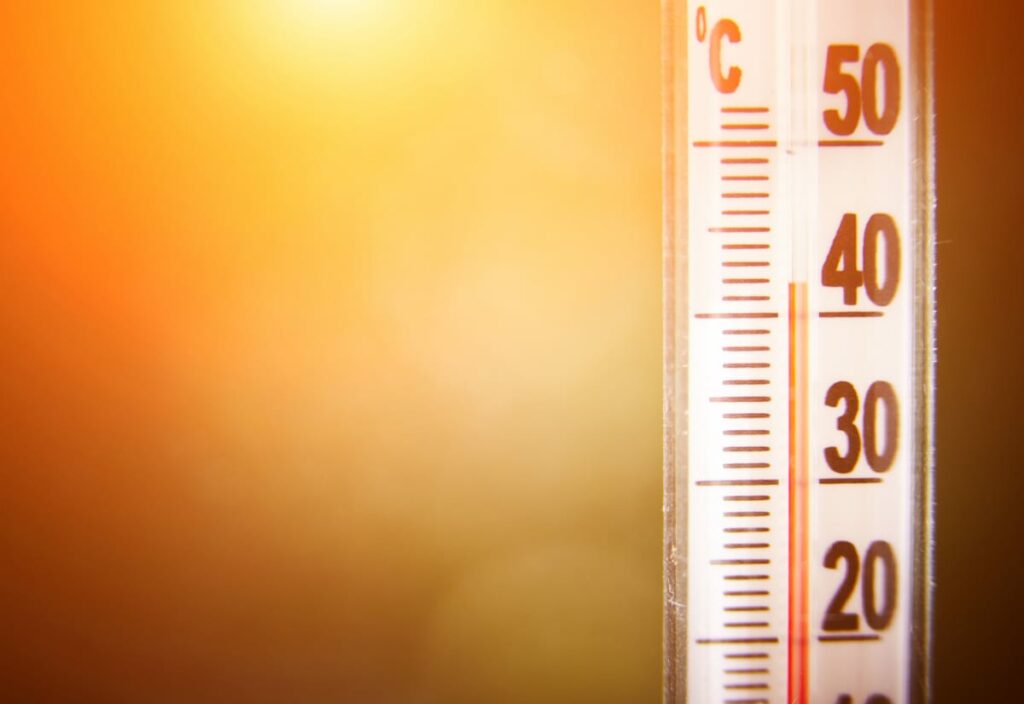A thermometer tells us how warm or cold a particular area is. However, wet-bulb temperature is not the same as ambient temperature. Wet-bulb temperature is measured by wrapping a thermometer’s bulb in a wet cloth, a proxy for human skin. The water evaporating from the fabric will reduce the temperature of the bulb, making it colder or warmer than the air temperature. Wet-bulb thermometers give close readings of temperature and humidity based on this principle.
In the laboratory, wet-bulb temperature is determined by wrapping a wet cloth around a thermometer, and the percentage of cooling that transpires is called wet-bulb temperature. In recent years, wet-bulb temperatures have reached nearly 95o Fahrenheit. These extreme temperatures are rare but are not unheard of. As global temperatures rise, the wet-bulb temperature will likely follow suit.
High wet-bulb temperatures are hazardous for older adults, children, and people who spend much of their day outside. People with underlying health conditions and those without air conditioning are also at risk. A wet-bulb temperature of 35o Fahrenheit can be rapidly fatal even for healthy individuals.

More heatstroke, nausea, organ swelling, and death are on the horizon.
Heatstroke occurs when the body’s thermoregulatory response fails. Heatstroke may be caused by extrinsic factors such as physical exertion, extreme temperatures, or environmental conditions. Physiologic limitations or certain medical conditions may make a person more vulnerable to heatstroke, and children and those with chronic illnesses are more susceptible.
The symptoms of a heat stroke vary greatly depending on the cause. Classic heatstroke may cause confusion and aggression, and it may also result in a drop in blood pressure, heart or respiratory rate, pale skin, nausea, organ swelling, and even death. Some people can be susceptible to heatstroke through environmental factors and illnesses, and many people can succumb to heatstroke if they have not sought medical attention for excessive sweating.
When the body temperature rises above 40o Celsius, it is referred to as a heatstroke. It can lead to a host of symptoms such as nausea and vomiting, altered mental status, and coma. People suffering from medical conditions, a sedentary lifestyle, or a family history of heatstroke are more likely to experience a heat stroke. This medical condition is severe and requires immediate treatment.
If you suspect someone has a heat stroke, seek emergency medical assistance or call 911. Remove clothing that does not allow air to circulate and mist the skin with cool water. While waiting for emergency medical help, ice packs and fans may be used to lower the body temperature, and ice packs may also be applied to areas rich in blood vessels. Once medical assistance has been contacted, the patient must be monitored to determine whether they have suffered heatstroke.
The physics of wet-bulb temperature.
The wet-bulb temperature is the thermodynamic temperature of the air, water vapor, and its mixture. This temperature is an approximation of the thermodynamic state of the whole system. The wet-bulb thermometer can measure temperatures close to the accurate wet-bulb temperature because it measures the temperature of a volume of air after evaporation.
The dry-bulb temperature can be read with a standard thermometer, given in degrees Fahrenheit or Celsius. The thermometer’s SI unit is Kelvin, and zero Kelvin is -273o Celsius. The dry-bulb temperature measures the amount of heat a substance has. In psychrometric charts, constant dry-bulb temperatures appear as vertical lines.
We are reaching the absolute limit of human tolerance.
If we are to keep up with climate change, we will have to accept that wet-bulb temperatures will rise above the limit of our ability to tolerate them. The current global average temperature may increase to 2o Celsius over pre-industrial levels by 2015, and that could lead to a wet-bulb temperature of 35o Celsius, the highest wet-bulb temperature ever recorded.
The wet-bulb temperature of 35o Celsius is the absolute limit of human tolerance for heat. Heat above that level is lethal for humans, but dry-bulb temperatures are more bearable in many parts of the world. One example is the Persian Gulf heatwave in 2015, where temperatures soared to more than 50o Celsius. The wet-bulb temperature also reaches its critical point when the humidity reaches 45%, common in river valleys and coastal areas. In 2015, a heatwave in the Persian Gulf killed over three hundred people, including many children.
The effects of heatwaves are likely to increase with increased global temperatures. The extent to which these conditions are dangerous depends on the number of exposure people experience in a given year. Wet-bulb temperatures are rising faster than ever, and scientists say the world will experience multiple weeks of hot, wet weather by the middle of this century. Water alone will not help you survive in such heat – air-conditioning is required. While fans allow sweat to evaporate, they are far less effective.

When it comes to heat, a common concept is that the body’s core temperature is about 35o Celsius. This is equivalent to a temperature of 39o Celsius in 75% humidity. At this point, sweat cannot cool the body because it’s too hot. This causes organ systems to overheat, and the blood rushes to the skin to release heat. However, this can starve the internal organs of blood.
Humans sweat to cool themselves, and evaporation helps the body cool down. The human body can only cool itself if the surrounding air is humid enough to allow sweat to evaporate. It is not surprising that the most deadly wet-bulb temperature is around 86o Fahrenheit. Furthermore, scientists point out that high temperatures are more common these days. In Washington state, the highest wet-bulb temperature was 87.2o Fahrenheit.














